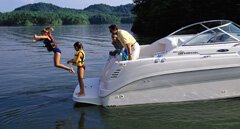|
Here is a list of the many things to consider before, during and after a hurricane. Some of the safety rules will make things easier for you during a hurricane. All are important and could help save your life and the lives of others. If local authorities recommend evacuation, you should leave! Their advice is based on knowledge of the strength of the storm and its potential for death and destruction. |
Hurricane Preparation Checklist
Activity:
Sailing
Overnight Cruising
Day Cruising

